This post looks at speculations about the physical appearance of Jesus.
My Jesus
In August I came across a 2018 profile of a then-new book, What Did Jesus Look Like? by Joan E. Taylor, professor of Christian Origins and Second Temple Judaism at King’s College London.1
In that profile, and in other online writings by Taylor herself, speculative comparisons are made with mummy portraits discovered in Roman Egypt, from the first and second centuries CE. I have a catalog of such portraits from a 2000 exhibition at the Met.2
They range from the somewhat stylized (actually due to a hemiatrophy from stroke or Bell’s palsy) to the icon-like and illustration-like to the simply elegant.
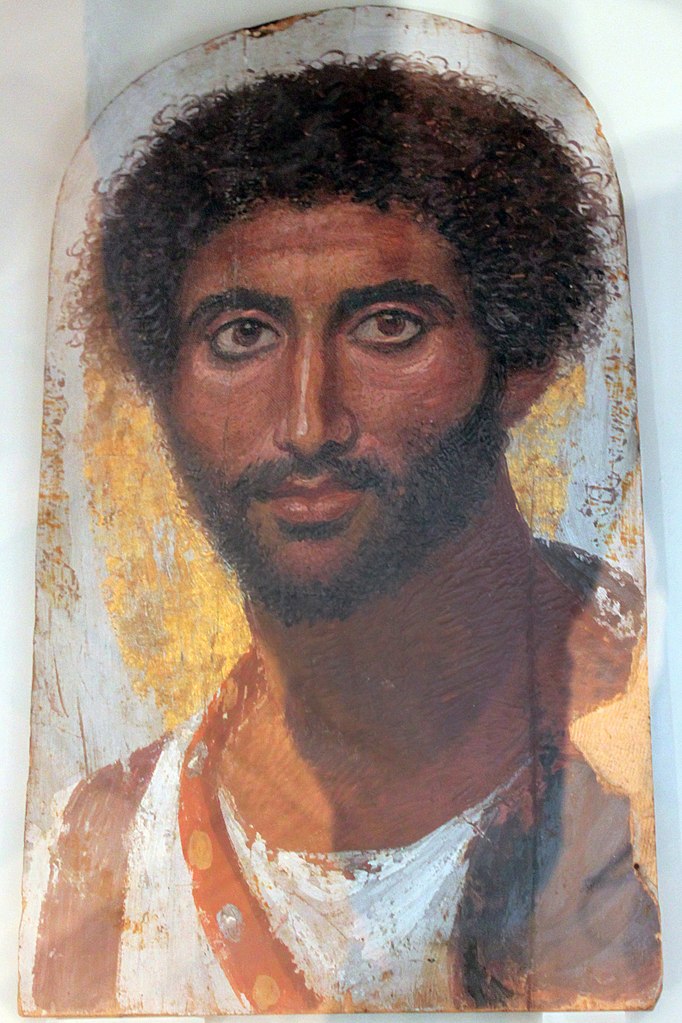
I recall, decades ago, telling my friend and mentor Milania something about “my Jesus,” as in my conception of the man. If I recall correctly she said she didn’t have such a (pre)conception. Hmm…: to thus confine, as I had, the progenitor of prolific faith. And yet Jesus has been confined and redefined and reinvented through the ages.
Head(s) of Christ and Surfer Jesus
I remember in Sunday school at our First Congregational Church in Boulder when a new (to us) portait of Jesus had come in for our consideration. This would have been 1970-ish: short-haired and just this side of smiling, if memory serves.
Searching the Web, I think I found him. A work by artist Richard Hook (1914–1975):
It’s understandable that this portrait is nicknamed “Surfer Jesus.” Some darker-toned renderings of the image make the subject look even whiter—with, mm…, sunglass lines. And yet this Standard White Jesus is a departure from what modern sacred art lover John A. Kohan calls the dominant image in the field of sacred commercial art at the time:
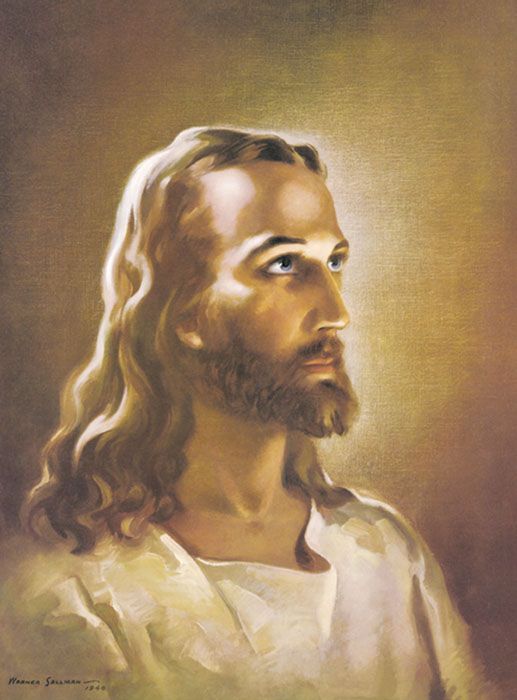
Warner Sallman’s color portrait began life as Son of Man, a charcoal sketch for the February 1924 edition of a new publication, The Covenant Companion. Divine inspiration, if not intervention, is credited with having allowed Sallman to meet his deadline after several false starts.
But outsider-artist Norbert Kox (1945–2018) made a compelling case that Sallman’s famous and much-reproduced image was coolly copied from French artist Léon Lhermitte’s L’Ami des humbles (Le Souper à Emmaüs)—The Friend of the Humble (Supper at Emmaus)—, completed thirty-two years before. To my mind, the gaze is the giveaway, though that of the figure breaking bread is aimed somewhat higher, which is understandable, given the context:
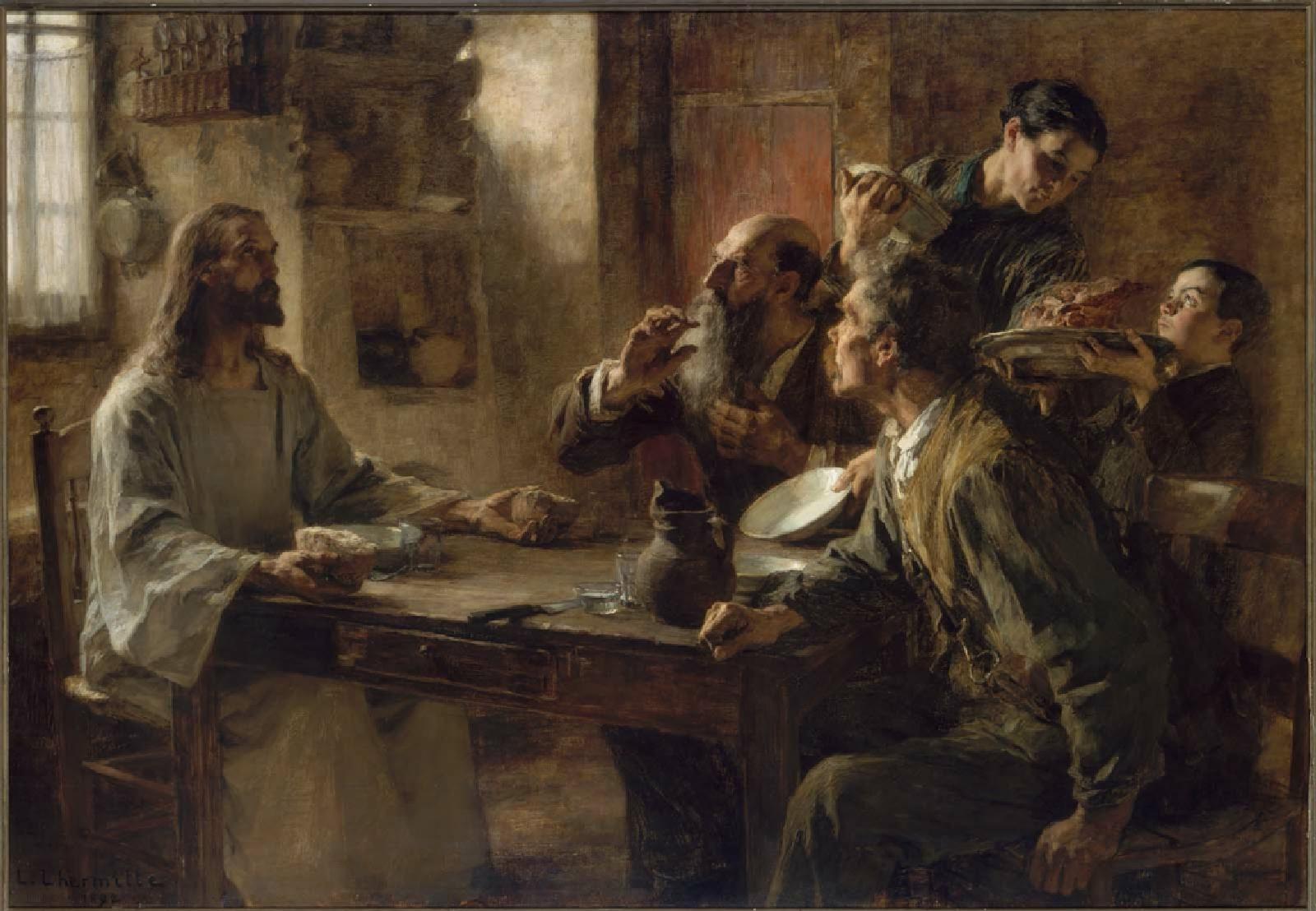
What can be seen as an opportunistic appropriation (if not a kitsch trivialization) by Sallman of the arresting original (Jesus recognized by his disciples on the evening of his resurrection) is somewhat softened by the symbols beheld by at least some recipients of Head of Christ’s half billion copies issued worldwide. Hidden in plain sight are the Eucharistic host on the forehead and the chalice on the temple. See what you think.
Behold the Man(ly)
In his biographical profile of Richard Hook, and Hook’s wife and collaborator Frances (the only one I found on the Web), John A. Kohan, a former full-time journalist, writes about Sallman’s portrait:
This backlit, celebrity photo-like portrait of a Nordic-featured, beautifully coiffed Christ was viewed as too effete and effeminate for the Swinging Sixties. Richard [Hook] met the need for a more masculine Jesus with his own rugged, sunburned (somewhat Semitic-looking) Head of Christ for Concordia Publishing House.
Again, this is countered—by David Morgan, Professor of Religious Studies at Duke University, who edited a monograph on Sallman’s art.3
Making a “Virile, Manly Christ” is the supertitle of the book’s second chapter, whose author Erika Doss writes:
Morgan explains that for many Christians during the Cold War Sallman’s portrait did symbolize a virile, manly Christ, while for others it embodied a more intimate and nurturing Jesus, a personal savior for modern times.4
An Average Joe Jesus?
Early in Joan Taylor’s study, she compares scriptural descriptions of Jesus with those of his dynastic and spiritual forebears, namely David and Moses, respectively.5 As an infant, Moses is described by his mother as “goodly,” i.e., of fine appearance (Exod. 2:2). David is “ruddy, and of a fair countenance” (1 Sam. 17:42). Regarding Absalom, David’s son with Maacah, “there was none to be so much praised […] for his beauty: from the sole of his foot even to the crown of his head there was no blemish in him” (2 Sam. 14:25).
Of Jesus, the Christian scriptures speak volumes: crickets…
And yet the evangelists had gone out of their way to shoehorn Jesus into his genealogy. Why omit the beauty that surely was his birthright as king?
One answer comes with the inevitable revisionism that moves us from Leonardo da Vinci’s Salvator Mundi (and Hans Memling’s separated-at-birth twin)—its alabaster features and coiled tresses—to Galilean Man, created by forensic anthropologist Richard Neave for the 2001 BBC documentary Son of Man.
Like Martin Scorcese’s red-haired Judas (which I’ve written about before), Neave offers a wrong-eyed Jesus (to borrow performer Jim White’s phrase), to say nothing about the rest of his physiognomy. It’s a lot to digest. Unless, like my mentor Milania, your options are open.
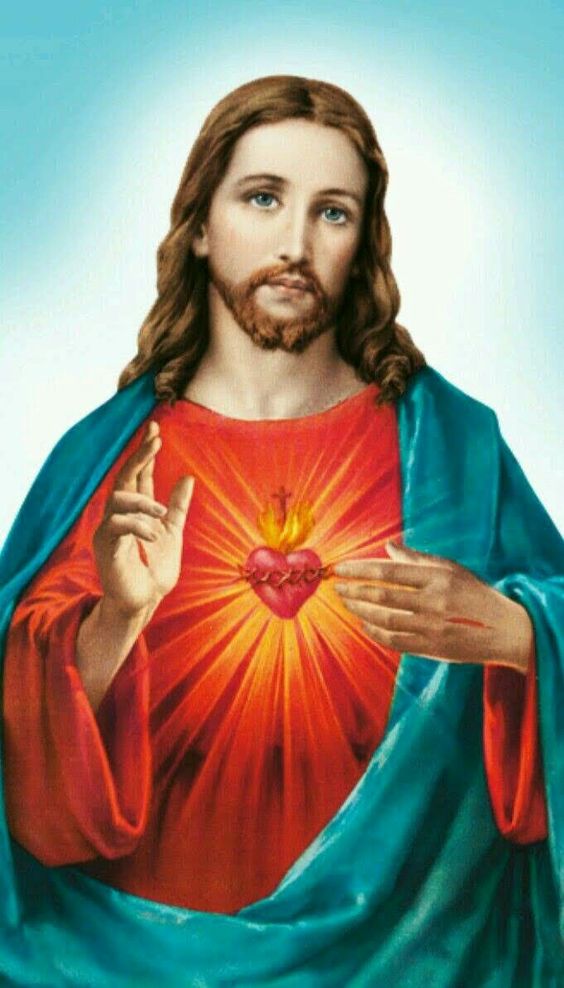
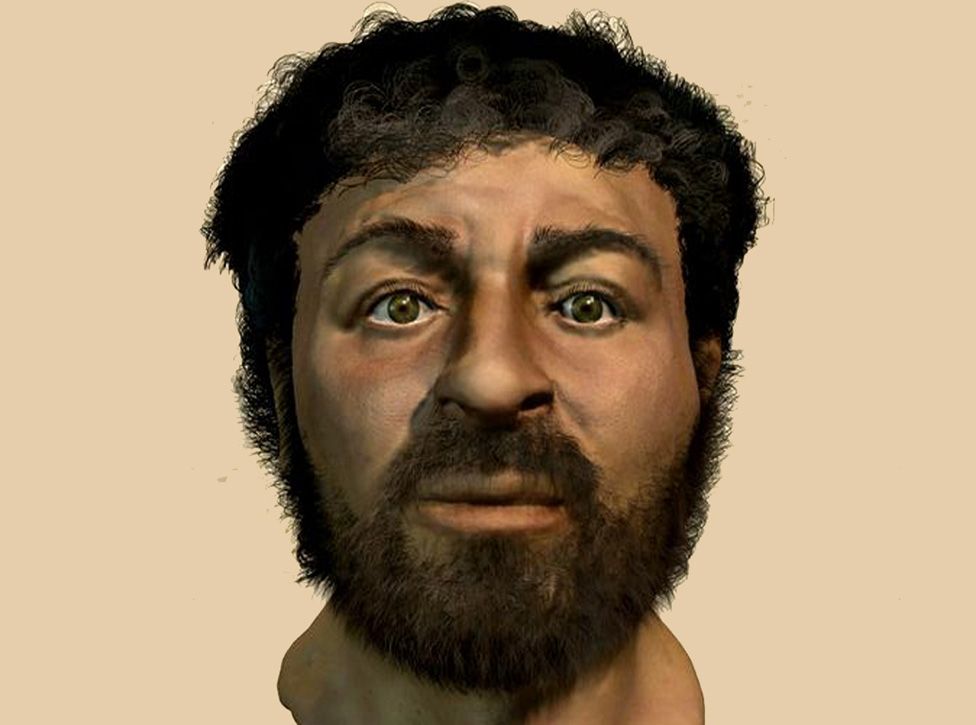
Taylor characterizes Neave’s rendition as “quite speculative” although she admits to “considerable advances in [computer-generated imagery] over the past ten years. Only a general model of face shape can be defined, not specifics, as there are no clues about fat cover or tissue thickness (lips, eyelids and so on) on an ancient skull,” such as the ones Neave used, obtained from the same era, and from Jerusalem. A Popular Mechanics article about Neave’s work explains that his approach was multidisciplinary, from nutrition, dentistry, and climate adaptation to the scriptural account of the agony in Gethsemane that “offers an obvious clue to the face of Jesus,” i.e., that “his features were typical of Galilean Semites,” so much so that Judas had to single him out from his disciples, with a kiss.6
And then there’s a bit of Hebrew scripture that Christians claimed as their own. Handel’s Messiah comes to mind, although the librettist begins Part II with the verse that follows this one (“He is [was] despisèd…”):
he hath no form nor comeliness; and when we shall see him, there is no beauty that we should desire him.
Taylor prefers to examine artifacts such as Ptolemaic-period contract records from Egypt that provide “the overall impression […] that the Jews of Egypt looked veritably identical to the rest of the population.” In support of that conclusion she offers “the closest we have to photographs” in the following two examples from Faiyum, Egypt.7
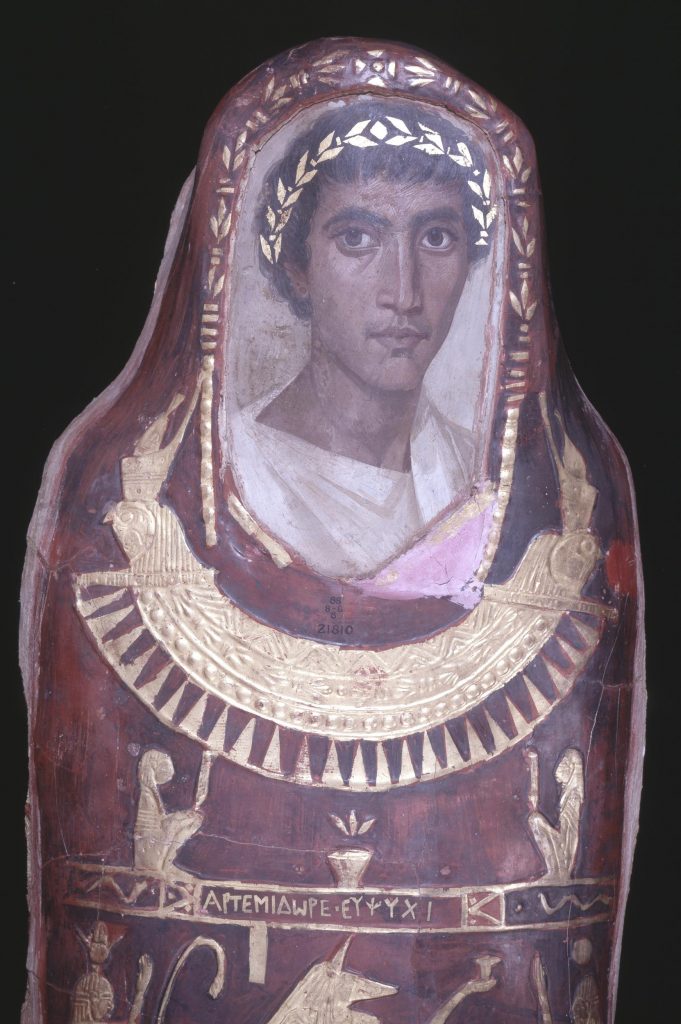
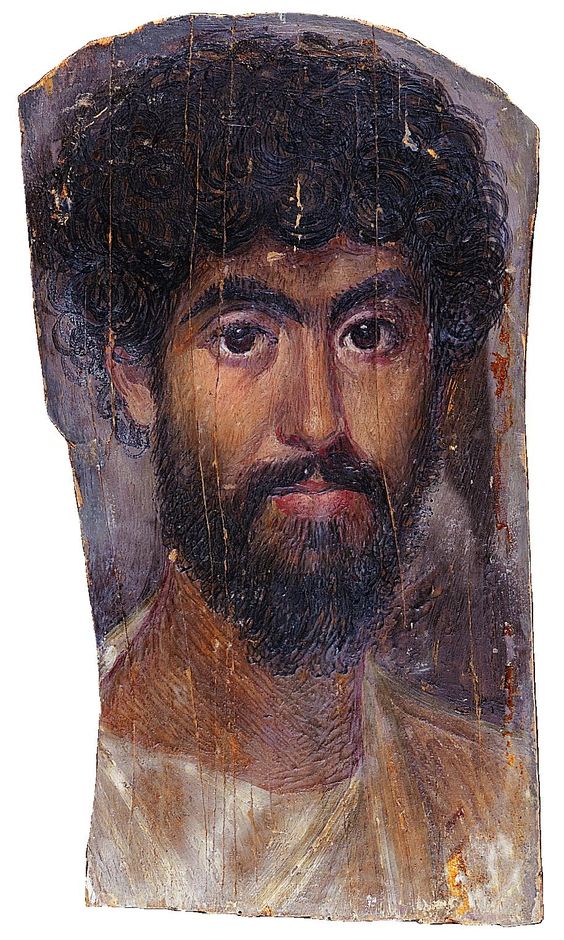
But even photographs can be retouched.
And so one might take comfort in this mutability of Jesus, as well as how scripture paints him—compassionate, angry, passive aggressive, willful, confounding, virile, instructive—depending on the portraitist, each depicting a supposedly historical figure who declines confinement. Those threatened by such smorgasbord spirituality might be the sort who interpret the Mustard Seed parable as a quaint acorn-to-oak tale. Others, of a different class, might recognize the story’s sense of solidarity, as analyzed by John Dominic Crossan.
Personal Jesus
I’m reminded that many years ago I wrote a, mm…, fake news item that riffed on Jesus’s softer side, and oddly it resonates today:
PROMINENT GIRLIE-MAN ADDRESSES ARNOLD
Jerusalem 9/1/04 – Self-described “girlie-man” Jesus H. Christ today took issue with a remark made last night by California Governor Arnold Schwarzenegger in his keynote address to the Republican National Convention in New York City:
Now, there’s another way you can tell you’re a Republican. You have faith in free enterprise, faith in the resourcefulness of the American people and faith in the U.S. economy. And to those critics who are so pessimistic about our economy, I say: Don’t be economic girlie-men.
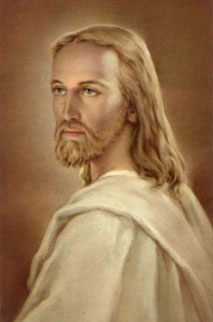
The normally reclusive Christ—like Schwarzenegger, a “once-scrawny” immigrant to the U.S.—spoke by telephone from his seaside villa in Galilee. “The Governor told us where his faith lies; let’s just say that I’m personally disappointed. And I can only assume his final comment was aimed at me as well.” Legend has it that in his beardless youth, Christ was often the butt of cruel jokes.
“Being a girlie-man does’t seem to have hindered me in building a successful, highly competitive transnational. If anything, it’s helped,” clearly a reference to Christ’s continuing successes in recruiting international leadership to his RC subsidiary, despite its scandal-plagued American division. He went on to remind the governor that he remains unaffiliated with any political party.
Distrustful of the touch-screen voting machines used in 2003 where he is registered, Christ declared, “I plan to vote absentee, although they don’t make it easy in Hartford,” referring to the restrictions placed on voters in Connecticut, as well as Rhode Island, Massachusetts, Kentucky, Mississippi, Alabama, and battleground states Pennsylvania, Missouri, and Ohio.
Joan Taylor covers much more ground in her book than I’ve suggested above, as a browse of the table of contents indicates.8
She explores several aspects of the representational Jesus: The Byzantine Cosmocrator, The Young God, The Miracle-Maker, The Philosopher, and The Wandering Vagabond, among them.
Image: Holy cards depict Jesus
in various shades of beige
Notes
- Joan E. Taylor, What Did Jesus Look Like? (New York: Bloomsbury T & T Clark, 2018).
- Susan Walker (ed.), Ancient Faces: Mummy Portraits from Roman Egypt (New York: Metropolitan Museum of New York and Routledge, 2000).
- David Morgan (ed.), Icons of American Protestantism: The Art of Warner Sallman (New Haven: Yale University Press, 1992).
- Morgan, 62.
- Taylor, 8–10.
- “The Real Face of Jesus” by Mike Fillon, 10 Apr 2020, appears to be an online (and updated?) version of the same author’s article published in the print edition of Popular Mechanics, Vol. 179, No. 12 (Dec 2002), which I consulted.
- Taylor, figures 66 and 58.
- The Google Books preview of Taylor’s volume lists the contents as in the edition I borrowed. The publisher’s listing differs.


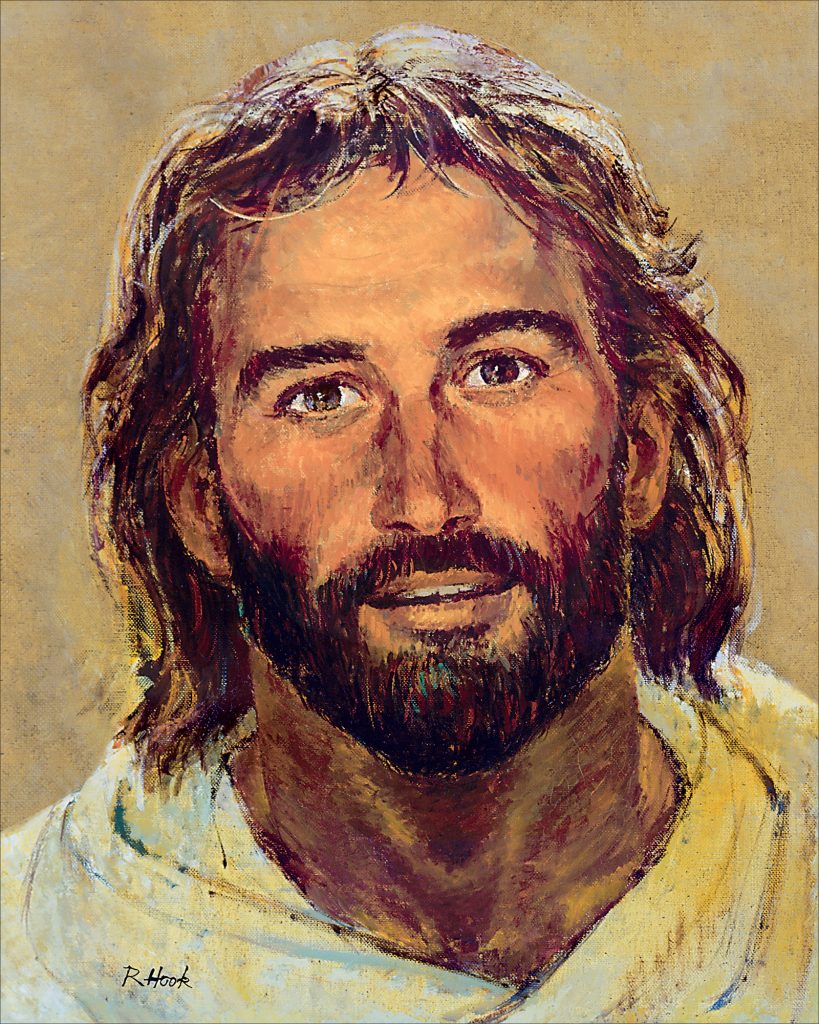
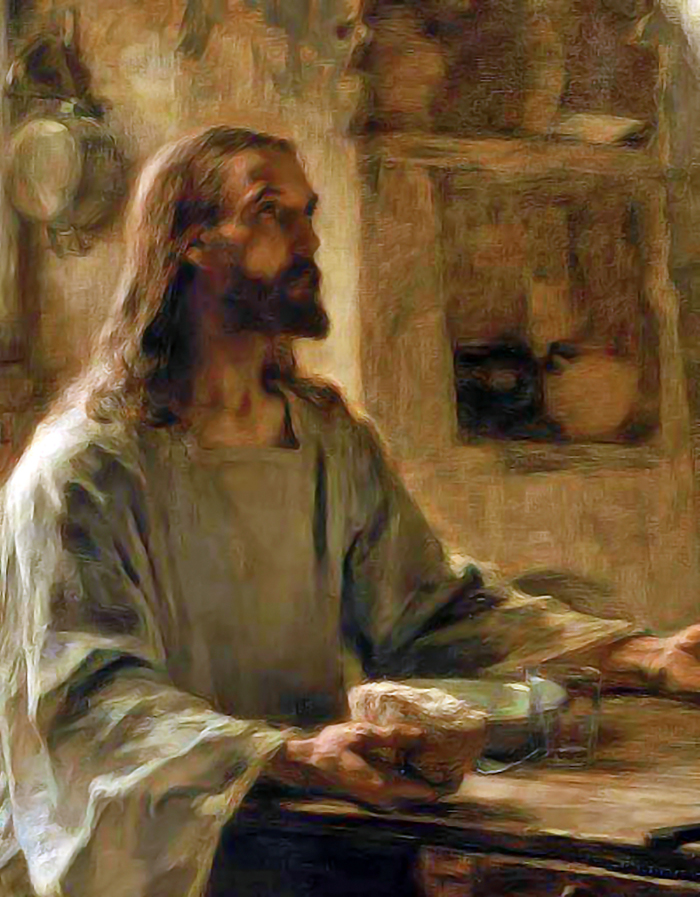
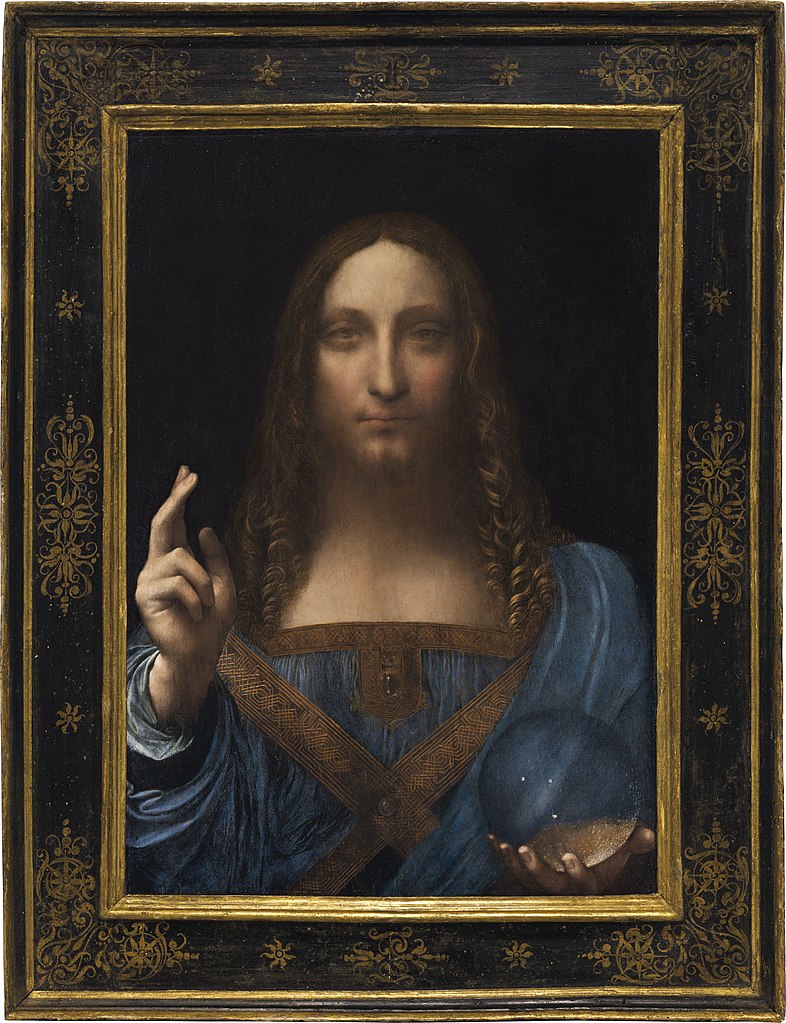
Thoroughly fascinating bit of scholarship—especially the gathering of illustrations. I still don’t have a picture of Jesus in my mind — when I start to think about that, I always end up with the picture of St. Francis of Assisi on the wall of the monastery in Subiaco. It was painted from life when Francis visited there. I also find myself intertwining the Sermon on the Mount and the Canticle of the Sun. Also the stigmata changes from Jesus to Francis, who prayed to be blessed with it. Perhaps Francis was the promised Second Coming. Wouldn’t that be a disappointment to those still waiting?
I hear you, Milania. I think the First Coming was enough of a disappointment, at least for many. Your way of envisioning the inscrutable is well taken. And thanks for pointing us to Subiaco. If folks might regard monasteries as drab and drear, let alone one occupying a cave, this website argues otherwise. The coming together of Benedict and Francis, virtually, must have given you goosebumps (it does me, virtually).